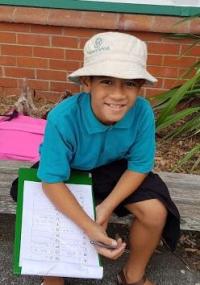Prospect School is a multi-cultural, year 1 to 6 primary school in West Auckland with a roll of around 350. This story describes how the school has created their own literacy and numeracy school-based progressions.
Initially, when National Standards (archived) first came in we tried to cross-reference the Standards to a variety of guides and progressions. We used The New Zealand Curriculum, Reading & Writing Standards, Mathematics Standards, Effective pedagogies in Maths, e-asTTle matrices (for Writing, Reading and Maths), Numeracy Framework texts, Literacy Learning Progressions, Draft Literacy progressions, Effective Literacy Practices, and the Probe testing kit. We were comprehensive in thinking about progressions and using the resources that best captured the curriculum.
Unfortunately, this array of documents led to a lack of clarity about what was to be taught, so we put the best ideas contained within all of these documents into our own literacy and numeracy school-based progressions. We also sought out and included elements from these that were the same as ongoing gaps that we know have been problematic for our students, as taken from school-wide data analyses. These have our own flavour and are broken down into what our students need to learn. Now that National Standards are no longer compulsory, we have reviewed where we are at.
In addressing the changes to the NAGs and National Standards, we first thought about what we liked and didn’t like about National Standards – what did work for us and what didn’t. After all, National Standards have been with us for eight years now and over that time our school has used them to hugely improve our assessment capability, our teaching and learning, and our students’ achievement.
What was working for us
We wanted to keep all the bits that worked for us, our kids and our community, and enabled us to continuously improve. These were:
- Our own National Standards (archived) and New Zealand Curriculum-based progressions – these were great for both learners, teachers and parents. We have found them very formative as they let everyone know where the learning is at, what the next step is, and what the longer journey looks like. We also modified these progressions a little to insert some of the issues that traditionally tripped our students up or that they found hard to learn e.g. vocabulary and inference from data. Now students enjoy being clear about what they are learning, their goals, their next steps, and use the language of our progressions.
-
The need to make, and then use, Overall Teacher Judgements (OTJs) based on an array of evidence across the curriculum made so much more sense pedagogically than trying to make the same decisions based on the results of a single test. We like the idea of student/teacher overall judgement (Student and Teacher Overall Judgement [STOJ]) because it better captures the idea of joint agency. And it avoids the anxiety that some students and teachers feel about the judgements made on the basis of a single test.
- Shaping and consistently using sound moderation processes. This has helped us to build both teacher curriculum knowledge and assessment capability, which has been hugely valuable.
- Sharing across schools in our Kāhui Ako with leaders and teachers. Once we had agreed on moderation processes, (use of National Standards and OTJs) decision-making about resource allocation and improvement plans became clear.
- School-wide consistency in the language of the teaching of writing, reading and maths, as well as the approach to assessment and assessment moderation processes.
- School-wide, consistent, drive to improve achievement – teachers adopting the expectation that every child should make at least one year’s progress for every year at school.
- The idea of assessing literacy and numeracy across the curriculum made a great deal of sense too, because it builds a richer picture of what it means to be literate and numerate.
- The clarity that came from our own progressions and the year by year expectation of what we wanted every child to learn also enabled us to upskill our teacher aides so that they could provide better support to the children who need it. They now feel much more useful to the school – and they are.
The board and the senior leadership team liked our own National Standards and New Zealand Curriculum-based progressions as well because they could see that we were all understanding and using the same progressions. Having a common language then allowed everyone to share a picture of individual and collective progress as is appropriate to their needs.
Our progressions also give us a clear picture of where we would want every learner to have reached at the end of every year and allows us to make decisions about where to put better targeted resourcing. This creates a culture of urgency about student making gains, and helps of course to monitor progress.
What was not working for us
- Reporting to parents that their child was "below" or "well below" the standard. This never felt comfortable for us and seemed to be incompatible with basic assessment principles, agency and motivation.
- Anniversary reporting – this always felt prone to error and unnecessarily panicked parents in the first year or two, where it was so easy for a learner to appear to be "below", and which make parents anxious, and then actually see them come right once they had got a little more used to school learning.
Anniversary reporting did not seem to take account of the individual differences in settling in to school. Comparing National Standards analyses of data to end of year analyses have shown some variation for those in their early years.
Data analysis based on anniversary dates meant that some students who met their targets after the anniversary dates could not be included in school-wide target-setting and that reflections on achievement could be skewed. Some students did not meet their target at the time of their anniversaries but by the end of the year, they had. In some cases, this was up to a 20% difference in results. We will change to "end of year" expectations instead for all year levels.



